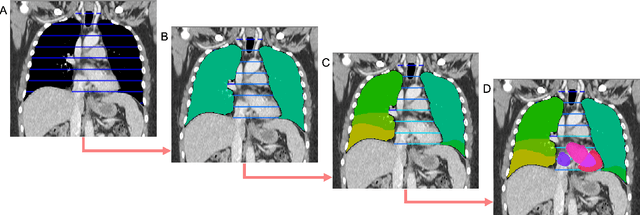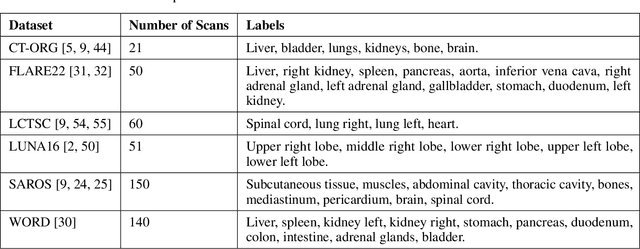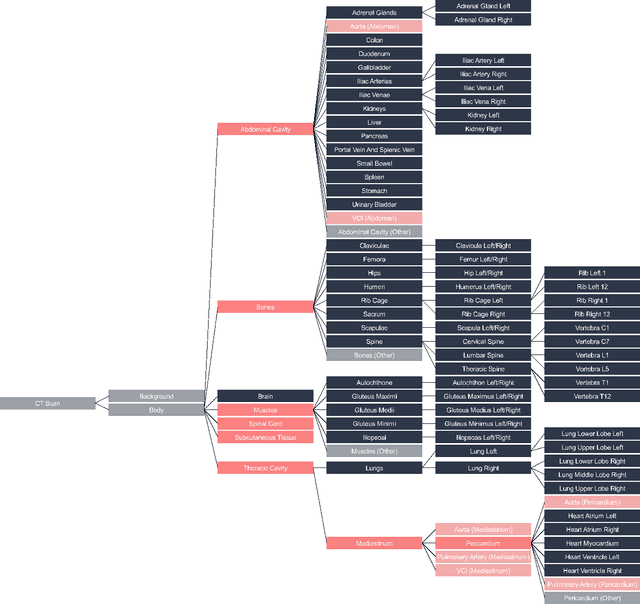Christoph M. Friedrich
An Enhanced Harmonic Densely Connected Hybrid Transformer Network Architecture for Chronic Wound Segmentation Utilising Multi-Colour Space Tensor Merging
Oct 04, 2024



Abstract:Chronic wounds and associated complications present ever growing burdens for clinics and hospitals world wide. Venous, arterial, diabetic, and pressure wounds are becoming increasingly common globally. These conditions can result in highly debilitating repercussions for those affected, with limb amputations and increased mortality risk resulting from infection becoming more common. New methods to assist clinicians in chronic wound care are therefore vital to maintain high quality care standards. This paper presents an improved HarDNet segmentation architecture which integrates a contrast-eliminating component in the initial layers of the network to enhance feature learning. We also utilise a multi-colour space tensor merging process and adjust the harmonic shape of the convolution blocks to facilitate these additional features. We train our proposed model using wound images from light-skinned patients and test the model on two test sets (one set with ground truth, and one without) comprising only darker-skinned cases. Subjective ratings are obtained from clinical wound experts with intraclass correlation coefficient used to determine inter-rater reliability. For the dark-skin tone test set with ground truth, we demonstrate improvements in terms of Dice similarity coefficient (+0.1221) and intersection over union (+0.1274). Qualitative analysis showed high expert ratings, with improvements of >3% demonstrated when comparing the baseline model with the proposed model. This paper presents the first study to focus on darker-skin tones for chronic wound segmentation using models trained only on wound images exhibiting lighter skin. Diabetes is highly prevalent in countries where patients have darker skin tones, highlighting the need for a greater focus on such cases. Additionally, we conduct the largest qualitative study to date for chronic wound segmentation.
SALT: Introducing a Framework for Hierarchical Segmentations in Medical Imaging using Softmax for Arbitrary Label Trees
Jul 11, 2024



Abstract:Traditional segmentation networks approach anatomical structures as standalone elements, overlooking the intrinsic hierarchical connections among them. This study introduces Softmax for Arbitrary Label Trees (SALT), a novel approach designed to leverage the hierarchical relationships between labels, improving the efficiency and interpretability of the segmentations. This study introduces a novel segmentation technique for CT imaging, which leverages conditional probabilities to map the hierarchical structure of anatomical landmarks, such as the spine's division into lumbar, thoracic, and cervical regions and further into individual vertebrae. The model was developed using the SAROS dataset from The Cancer Imaging Archive (TCIA), comprising 900 body region segmentations from 883 patients. The dataset was further enhanced by generating additional segmentations with the TotalSegmentator, for a total of 113 labels. The model was trained on 600 scans, while validation and testing were conducted on 150 CT scans. Performance was assessed using the Dice score across various datasets, including SAROS, CT-ORG, FLARE22, LCTSC, LUNA16, and WORD. Among the evaluated datasets, SALT achieved its best results on the LUNA16 and SAROS datasets, with Dice scores of 0.93 and 0.929 respectively. The model demonstrated reliable accuracy across other datasets, scoring 0.891 on CT-ORG and 0.849 on FLARE22. The LCTSC dataset showed a score of 0.908 and the WORD dataset also showed good performance with a score of 0.844. SALT used the hierarchical structures inherent in the human body to achieve whole-body segmentations with an average of 35 seconds for 100 slices. This rapid processing underscores its potential for integration into clinical workflows, facilitating the automatic and efficient computation of full-body segmentations with each CT scan, thus enhancing diagnostic processes and patient care.
WisPerMed at BioLaySumm: Adapting Autoregressive Large Language Models for Lay Summarization of Scientific Articles
May 20, 2024Abstract:This paper details the efforts of the WisPerMed team in the BioLaySumm2024 Shared Task on automatic lay summarization in the biomedical domain, aimed at making scientific publications accessible to non-specialists. Large language models (LLMs), specifically the BioMistral and Llama3 models, were fine-tuned and employed to create lay summaries from complex scientific texts. The summarization performance was enhanced through various approaches, including instruction tuning, few-shot learning, and prompt variations tailored to incorporate specific context information. The experiments demonstrated that fine-tuning generally led to the best performance across most evaluated metrics. Few-shot learning notably improved the models' ability to generate relevant and factually accurate texts, particularly when using a well-crafted prompt. Additionally, a Dynamic Expert Selection (DES) mechanism to optimize the selection of text outputs based on readability and factuality metrics was developed. Out of 54 participants, the WisPerMed team reached the 4th place, measured by readability, factuality, and relevance. Determined by the overall score, our approach improved upon the baseline by approx. 5.5 percentage points and was only approx 1.5 percentage points behind the first place.
WisPerMed at "Discharge Me!": Advancing Text Generation in Healthcare with Large Language Models, Dynamic Expert Selection, and Priming Techniques on MIMIC-IV
May 18, 2024



Abstract:This study aims to leverage state of the art language models to automate generating the "Brief Hospital Course" and "Discharge Instructions" sections of Discharge Summaries from the MIMIC-IV dataset, reducing clinicians' administrative workload. We investigate how automation can improve documentation accuracy, alleviate clinician burnout, and enhance operational efficacy in healthcare facilities. This research was conducted within our participation in the Shared Task Discharge Me! at BioNLP @ ACL 2024. Various strategies were employed, including few-shot learning, instruction tuning, and Dynamic Expert Selection (DES), to develop models capable of generating the required text sections. Notably, utilizing an additional clinical domain-specific dataset demonstrated substantial potential to enhance clinical language processing. The DES method, which optimizes the selection of text outputs from multiple predictions, proved to be especially effective. It achieved the highest overall score of 0.332 in the competition, surpassing single-model outputs. This finding suggests that advanced deep learning methods in combination with DES can effectively automate parts of electronic health record documentation. These advancements could enhance patient care by freeing clinician time for patient interactions. The integration of text selection strategies represents a promising avenue for further research.
ROCOv2: Radiology Objects in COntext Version 2, an Updated Multimodal Image Dataset
May 16, 2024Abstract:Automated medical image analysis systems often require large amounts of training data with high quality labels, which are difficult and time consuming to generate. This paper introduces Radiology Object in COntext version 2 (ROCOv2), a multimodal dataset consisting of radiological images and associated medical concepts and captions extracted from the PMC Open Access subset. It is an updated version of the ROCO dataset published in 2018, and adds 35,705 new images added to PMC since 2018. It further provides manually curated concepts for imaging modalities with additional anatomical and directional concepts for X-rays. The dataset consists of 79,789 images and has been used, with minor modifications, in the concept detection and caption prediction tasks of ImageCLEFmedical Caption 2023. The dataset is suitable for training image annotation models based on image-caption pairs, or for multi-label image classification using Unified Medical Language System (UMLS) concepts provided with each image. In addition, it can serve for pre-training of medical domain models, and evaluation of deep learning models for multi-task learning.
Comprehensive Study on German Language Models for Clinical and Biomedical Text Understanding
Apr 08, 2024



Abstract:Recent advances in natural language processing (NLP) can be largely attributed to the advent of pre-trained language models such as BERT and RoBERTa. While these models demonstrate remarkable performance on general datasets, they can struggle in specialized domains such as medicine, where unique domain-specific terminologies, domain-specific abbreviations, and varying document structures are common. This paper explores strategies for adapting these models to domain-specific requirements, primarily through continuous pre-training on domain-specific data. We pre-trained several German medical language models on 2.4B tokens derived from translated public English medical data and 3B tokens of German clinical data. The resulting models were evaluated on various German downstream tasks, including named entity recognition (NER), multi-label classification, and extractive question answering. Our results suggest that models augmented by clinical and translation-based pre-training typically outperform general domain models in medical contexts. We conclude that continuous pre-training has demonstrated the ability to match or even exceed the performance of clinical models trained from scratch. Furthermore, pre-training on clinical data or leveraging translated texts have proven to be reliable methods for domain adaptation in medical NLP tasks.
On the Impact of Cross-Domain Data on German Language Models
Oct 13, 2023Abstract:Traditionally, large language models have been either trained on general web crawls or domain-specific data. However, recent successes of generative large language models, have shed light on the benefits of cross-domain datasets. To examine the significance of prioritizing data diversity over quality, we present a German dataset comprising texts from five domains, along with another dataset aimed at containing high-quality data. Through training a series of models ranging between 122M and 750M parameters on both datasets, we conduct a comprehensive benchmark on multiple downstream tasks. Our findings demonstrate that the models trained on the cross-domain dataset outperform those trained on quality data alone, leading to improvements up to $4.45\%$ over the previous state-of-the-art. The models are available at https://huggingface.co/ikim-uk-essen
PreprintResolver: Improving Citation Quality by Resolving Published Versions of ArXiv Preprints using Literature Databases
Sep 04, 2023Abstract:The growing impact of preprint servers enables the rapid sharing of time-sensitive research. Likewise, it is becoming increasingly difficult to distinguish high-quality, peer-reviewed research from preprints. Although preprints are often later published in peer-reviewed journals, this information is often missing from preprint servers. To overcome this problem, the PreprintResolver was developed, which uses four literature databases (DBLP, SemanticScholar, OpenAlex, and CrossRef / CrossCite) to identify preprint-publication pairs for the arXiv preprint server. The target audience focuses on, but is not limited to inexperienced researchers and students, especially from the field of computer science. The tool is based on a fuzzy matching of author surnames, titles, and DOIs. Experiments were performed on a sample of 1,000 arXiv-preprints from the research field of computer science and without any publication information. With 77.94 %, computer science is highly affected by missing publication information in arXiv. The results show that the PreprintResolver was able to resolve 603 out of 1,000 (60.3 %) arXiv-preprints from the research field of computer science and without any publication information. All four literature databases contributed to the final result. In a manual validation, a random sample of 100 resolved preprints was checked. For all preprints, at least one result is plausible. For nine preprints, more than one result was identified, three of which are partially invalid. In conclusion the PreprintResolver is suitable for individual, manually reviewed requests, but less suitable for bulk requests. The PreprintResolver tool (https://preprintresolver.eu, Available from 2023-08-01) and source code (https://gitlab.com/ippolis_wp3/preprint-resolver, Accessed: 2023-07-19) is available online.
Why is the winner the best?
Mar 30, 2023



Abstract:International benchmarking competitions have become fundamental for the comparative performance assessment of image analysis methods. However, little attention has been given to investigating what can be learnt from these competitions. Do they really generate scientific progress? What are common and successful participation strategies? What makes a solution superior to a competing method? To address this gap in the literature, we performed a multi-center study with all 80 competitions that were conducted in the scope of IEEE ISBI 2021 and MICCAI 2021. Statistical analyses performed based on comprehensive descriptions of the submitted algorithms linked to their rank as well as the underlying participation strategies revealed common characteristics of winning solutions. These typically include the use of multi-task learning (63%) and/or multi-stage pipelines (61%), and a focus on augmentation (100%), image preprocessing (97%), data curation (79%), and postprocessing (66%). The "typical" lead of a winning team is a computer scientist with a doctoral degree, five years of experience in biomedical image analysis, and four years of experience in deep learning. Two core general development strategies stood out for highly-ranked teams: the reflection of the metrics in the method design and the focus on analyzing and handling failure cases. According to the organizers, 43% of the winning algorithms exceeded the state of the art but only 11% completely solved the respective domain problem. The insights of our study could help researchers (1) improve algorithm development strategies when approaching new problems, and (2) focus on open research questions revealed by this work.
Biomedical image analysis competitions: The state of current participation practice
Dec 16, 2022Abstract:The number of international benchmarking competitions is steadily increasing in various fields of machine learning (ML) research and practice. So far, however, little is known about the common practice as well as bottlenecks faced by the community in tackling the research questions posed. To shed light on the status quo of algorithm development in the specific field of biomedical imaging analysis, we designed an international survey that was issued to all participants of challenges conducted in conjunction with the IEEE ISBI 2021 and MICCAI 2021 conferences (80 competitions in total). The survey covered participants' expertise and working environments, their chosen strategies, as well as algorithm characteristics. A median of 72% challenge participants took part in the survey. According to our results, knowledge exchange was the primary incentive (70%) for participation, while the reception of prize money played only a minor role (16%). While a median of 80 working hours was spent on method development, a large portion of participants stated that they did not have enough time for method development (32%). 25% perceived the infrastructure to be a bottleneck. Overall, 94% of all solutions were deep learning-based. Of these, 84% were based on standard architectures. 43% of the respondents reported that the data samples (e.g., images) were too large to be processed at once. This was most commonly addressed by patch-based training (69%), downsampling (37%), and solving 3D analysis tasks as a series of 2D tasks. K-fold cross-validation on the training set was performed by only 37% of the participants and only 50% of the participants performed ensembling based on multiple identical models (61%) or heterogeneous models (39%). 48% of the respondents applied postprocessing steps.
 Add to Chrome
Add to Chrome Add to Firefox
Add to Firefox Add to Edge
Add to Edge